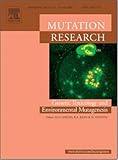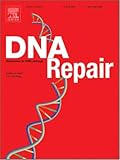|
|
Help |
| Home - Science - Saccharomyces (Books) | |
e99 Online Shopping Mall
|
|
Help |
| Home - Science - Saccharomyces (Books) | |
| Back | 41-60 of 100 | Next 20 |
click price to see details click image to enlarge click link to go to the store
| 41. Saccharomyces Genome Database | |
 | Paperback: 174
Pages
(2010-07-30)
list price: US$64.00 -- used & new: US$63.99 (price subject to change: see help) Asin: 6131078807 Canada | United Kingdom | Germany | France | Japan |
|
Editorial Review Product Description | |
| 42. Ethanol fermentation of acid-hydrolyzed cellulosic pyrolysate with Saccharomyces cerevisiae [An article from: Bioresource Technology] by Z. Yu, H. Zhang | |
 | Digital:
Pages
(2004-06-01)
list price: US$8.95 -- used & new: US$8.95 (price subject to change: see help) Asin: B000RQZT6M Canada | United Kingdom | Germany | France | Japan |
|
Editorial Review Product Description | |
| 43. Ethanolic fermentation of acid pre-treated starch industry effluents by recombinant Saccharomyces cerevisiae strains [An article from: Bioresource Technology] by J. Zaldivar, C. Roca, C. Le Foll, B Hahn-Hagerdal | |
 | Digital:
Pages
list price: US$8.95 -- used & new: US$8.95 (price subject to change: see help) Asin: B000RR5T0C Canada | United Kingdom | Germany | France | Japan |
|
Editorial Review Product Description | |
| 44. CHEMICAL MECHANISM OF HOMOCITRATE SYNTHASE FROM Saccharomyces cerevisiae by jinghua qian | |
 | Paperback: 164
Pages
(2009-05-31)
list price: US$96.00 -- used & new: US$96.00 (price subject to change: see help) Asin: 3639161556 Canada | United Kingdom | Germany | France | Japan |
|
Editorial Review Product Description | |
| 45. Unequal sister chromatid exchange in the rDNA array of Saccharomyces cerevisiae [An article from: Mut.Res.-Genetic Toxicology and Environmental Mutagenesis] by M. Motovali-Bashi, Z. Hojati, R.M. Walmsley | |
 | Digital:
Pages
(2004-12-12)
list price: US$8.95 -- used & new: US$8.95 (price subject to change: see help) Asin: B000RR4MKU Canada | United Kingdom | Germany | France | Japan |
|
Editorial Review Product Description | |
| 46. The Molecular and Cellular Biology of the Yeast Saccharomyces: Vol. 3, Cell Cycl by James R.; Pringle, John; jones, Elizabeth Broach | |
| Paperback:
Pages
(1997)
Asin: B001KUYUVY Canada | United Kingdom | Germany | France | Japan | |
| 47. The Saccharomyces cerevisiae PDS1 and RAD9 checkpoint genes control different DNA double-strand break repair pathways [An article from: DNA Repair] by D. DeMase, L. Zeng, C. Cera, M. Fasullo | |
 | Digital:
Pages
(2005-01-02)
list price: US$10.95 -- used & new: US$10.95 (price subject to change: see help) Asin: B000RR38R8 Canada | United Kingdom | Germany | France | Japan |
|
Editorial Review Product Description | |
| 48. Methoden zur effizienten Proteinidentifizierung anhand von Massenspektrometrie am Beispiel des mitochondrialen Außenmembran-Proteoms der Bäckerhefe Saccharomyces cerevisiae by Andreas M. Böhm | |
| Paperback:
Pages
(2006-11-30)
-- used & new: US$64.75 (price subject to change: see help) Asin: B001T46X0C Canada | United Kingdom | Germany | France | Japan | |
| 49. Genetics (Journal) March 2000 Volume 154, No.3: Third International Symposium of Fungal Genomics; Trinucleotide Repeats Are Clustered in Regulatory Genes in Saccharomyces Cerevisiae by Genetics Society Of America | |
| Paperback:
Pages
(2000)
Asin: B002KI5LZE Canada | United Kingdom | Germany | France | Japan | |
| 50. Molecular Genetic Analysis of the Ubiquitin-Protein Ligase System of Saccharomyces Cerevisiae by John Patrick McGrath | |
| Hardcover:
Pages
(1991)
-- used & new: US$85.99 (price subject to change: see help) Asin: B0023TYUAW Canada | United Kingdom | Germany | France | Japan | |
| 51. Xylose fermentation by genetically modified Saccharomyces cerevisiae 259ST in spent sulfite liquor [An article from: Bioresource Technology] by S.S. Helle, A. Murray, J. Lam, D.R. Cameron, Duff | |
 | Digital:
Pages
(2004-04-01)
list price: US$8.95 -- used & new: US$8.95 (price subject to change: see help) Asin: B000RQZTDA Canada | United Kingdom | Germany | France | Japan |
|
Editorial Review Product Description | |
| 52. Acción de un campo magnético sobre un cultivo aireado de Saccharomyces cerevisiae.: An article from: Interciencia by Jose Edgar Zapata Montoya, Margarita Hoyos Ramirez, German Moreno Ospina | |
| Digital: 15
Pages
(2005-07-01)
list price: US$5.95 -- used & new: US$5.95 (price subject to change: see help) Asin: B000FDE242 Canada | United Kingdom | Germany | France | Japan | |
|
Editorial Review Product Description | |
| 53. Influence of specific growth limitation on biosorption of heavy metals by Saccharomyces cerevisiae [An article from: International Biodeterioration & Biodegradation] by P. Dostalek, M. Patzak, P. Matejka | |
 | Digital:
Pages
list price: US$8.95 -- used & new: US$8.95 (price subject to change: see help) Asin: B000RQZUAW Canada | United Kingdom | Germany | France | Japan |
|
Editorial Review Product Description | |
| 54. Adaptation of a recombinant xylose-utilizing Saccharomyces cerevisiae strain to a sugarcane bagasse hydrolysate with high content of fermentation inhibitors [An article from: Bioresource Technology] by C. Martin, M. Marcet, O. Almazan, L.J. Jonsson | |
 | Digital:
Pages
(2007-07-01)
list price: US$10.95 -- used & new: US$10.95 (price subject to change: see help) Asin: B000PDT0AI Canada | United Kingdom | Germany | France | Japan |
|
Editorial Review Product Description | |
| 55. Wheat Beer: Wheat, Saccharomyces Cerevisiae, Berliner Weisse, Gose, Paulaner, Weihenstephan, Magic Hat Brewing Company, Lemon | |
 | Paperback: 108
Pages
(2010-02-16)
list price: US$53.00 -- used & new: US$47.00 (price subject to change: see help) Asin: 6130406975 Canada | United Kingdom | Germany | France | Japan |
|
Editorial Review Product Description | |
| 56. Psoralen-sensitive mutant pso9-1 of Saccharomyces cerevisiae contains a mutant allele of the DNA damage checkpoint gene MEC3 [An article from: DNA Repair] by J.M. Cardone, L.F. Revers, R.M. Machado, Bonatto | |
 | Digital:
Pages
list price: US$8.95 -- used & new: US$8.95 (price subject to change: see help) Asin: B000RR6KUA Canada | United Kingdom | Germany | France | Japan |
|
Editorial Review Product Description | |
| 57. Media Evaluation for Bioethanol Production from Cassava Hydrolysate: POTENTIAL UTILIZATION OF CASSAVA STARCH FOR BIOETHANOL PRODUCTION FROM LOW COST MEDIA USING Saccharomyces cerevisiae by OLALEKAN ALADE | |
 | Paperback: 172
Pages
(2010-08-09)
list price: US$90.00 -- used & new: US$85.62 (price subject to change: see help) Asin: 3838377486 Canada | United Kingdom | Germany | France | Japan |
|
Editorial Review Product Description | |
| 58. Saccharomyces Florentinus | |
 | Paperback: 106
Pages
(2010-08-01)
list price: US$51.00 -- used & new: US$50.99 (price subject to change: see help) Asin: 6131091730 Canada | United Kingdom | Germany | France | Japan |
|
Editorial Review Product Description | |
| 59. Saccharomyces cerevisiae RAD53 (CHK2) but not CHK1 is required for double-strand break-initiated SCE and DNA damage-associated SCE after exposure to X ... agents [An article from: DNA Repair] by M. Fasullo, Z. Dong, M. Sun, L. Zeng | |
 | Digital:
Pages
list price: US$8.95 -- used & new: US$8.95 (price subject to change: see help) Asin: B000RR6KJG Canada | United Kingdom | Germany | France | Japan |
|
Editorial Review Product Description | |
| 60. Saccharomyces: Webster's Timeline History, 1847 - 1995 by Icon Group International | |
 | Paperback: 332
Pages
(2010-05-28)
list price: US$28.95 -- used & new: US$28.95 (price subject to change: see help) Asin: B0043D2LZW Canada | United Kingdom | Germany | France | Japan |
|
Editorial Review Product Description | |
| Back | 41-60 of 100 | Next 20 |